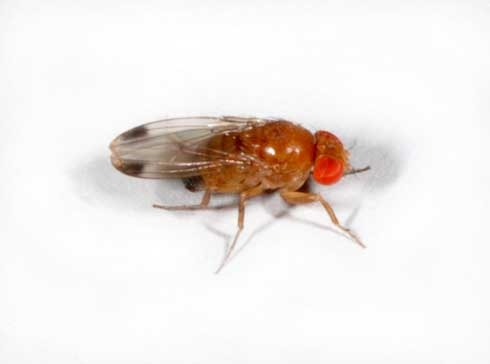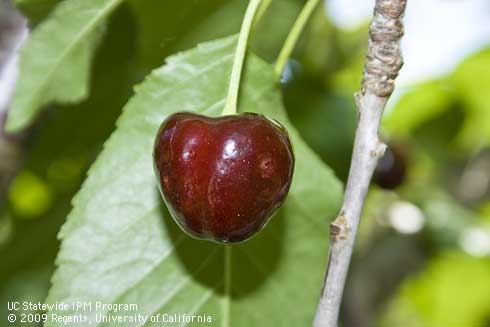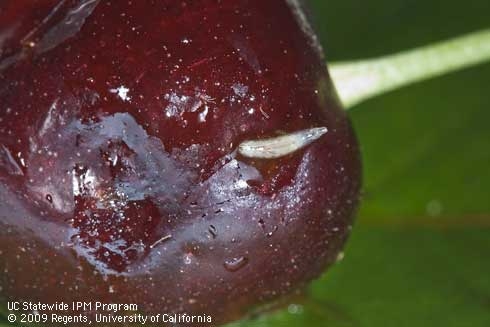[From March 2013 issue of the Retail Nursery and Garden Center IPM News.]
Spotted winged drosophila (SWD), Drosophila suzukii, is a fruit fly that first arrived in 
Unlike other fruit flies that attack fruit only after it has ripened and is starting to deteriorate, SWD attacks healthy fruit on the tree just before the fruit ripens. On trees with mid- to late-season ripening varieties, almost every cherry can be affected. Unfortunately, gardeners don't often notice the infestation until harvest. By then it is too late to do anything to manage the problem.
Adults lay eggs inside fruit just as it begins to ripen, creating tiny pinprick holes (Figure 2). Eggs hatch into small maggots that feed internally in the fruit. Infested fruit may often have a number of maggots (Figure 3). Fruit turns mushy and brown and is sometimes invaded by secondary bacteria or fungi.
Home gardeners who had SWD infestations last year will probably want to take some steps to reduce the problem this year. If cherries weren't infested last year, gardeners with cherries should regularly check ripening fruit for damage before unnecessarily treating with a pesticide. They may also wish to hang a fruit fly trap baited with pure apple cider vinegar to help with detection.
Timing Sprays. Sprays should begin as soon as fruit begins to turn from yellow to pink (usually about two to three weeks before harvest). If you didn't have damage from SWD last year, look for stings on fruit to confirm an infestation. You can also hang a fruit fly trap baited with apple cider vinegar and check regularly for fruit flies with spotted wings. If infestations were significant last year, it is probably advisable to treat. In any case, spray when stings are first seen. A second spray should be applied 7 to 10 days later, but be sure to observe the preharvest interval on the label. The only organically approved less toxic insecticide known to be effective on SWD is spinosad. Other products such as malathion can be used, but these are very toxic to natural enemies and bees and can lead to outbreaks of secondary pests.
Gardeners should be urged to clean up and destroy any cherries that drop on the ground or remain infested on trees. 
For more information, see Pest Notes: Spotted Wing Drosophila.
This article was originally published in the March 2013 issue of the Retail Nursery and Garden Center IPM News. See this and other articles at http://www.ipm.ucdavis.edu/RETAIL/retail-newsletter.html.